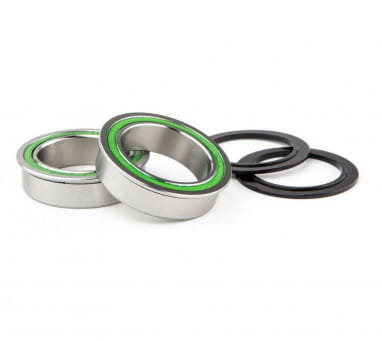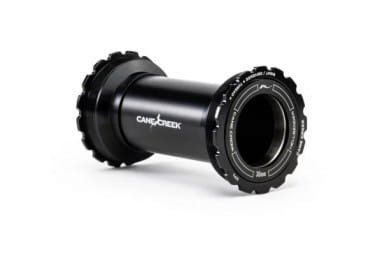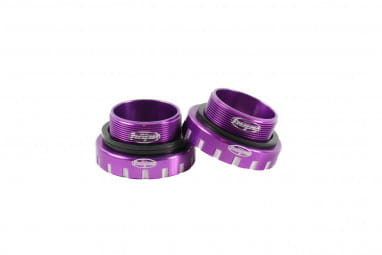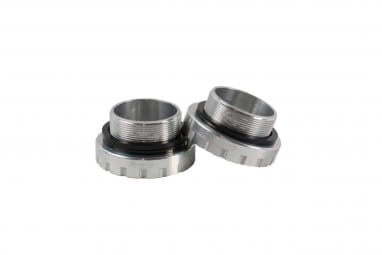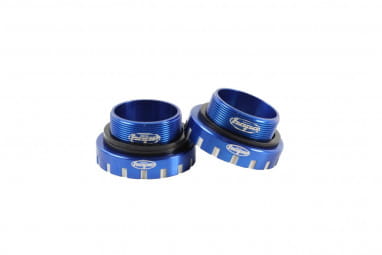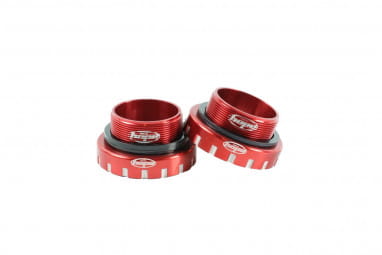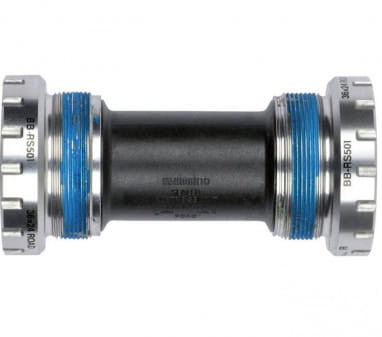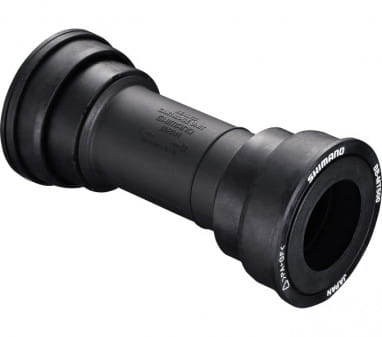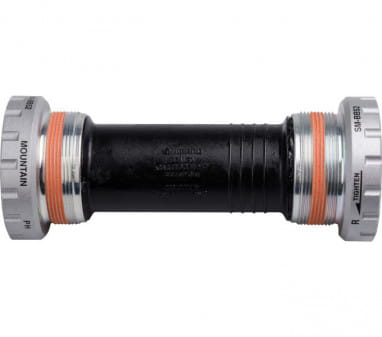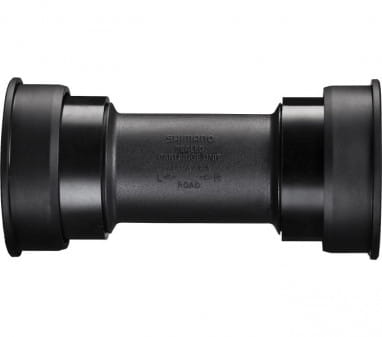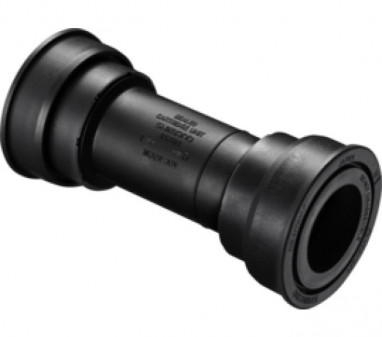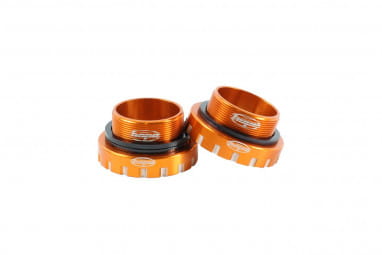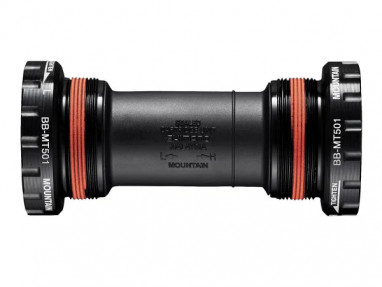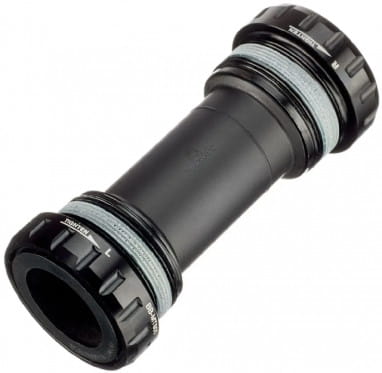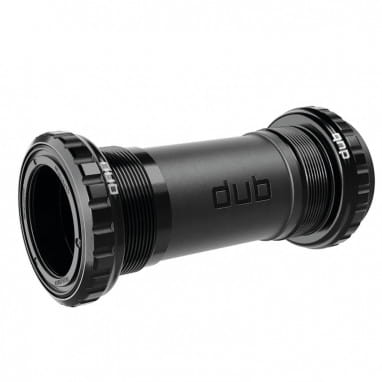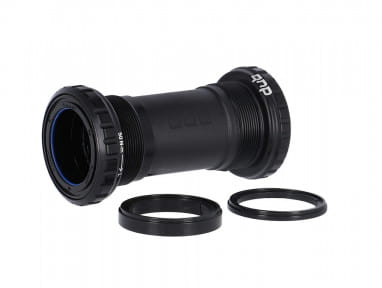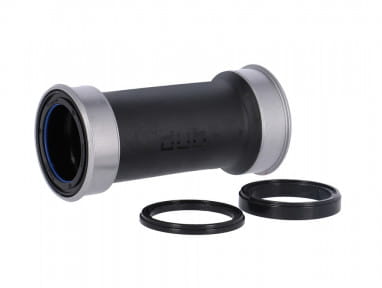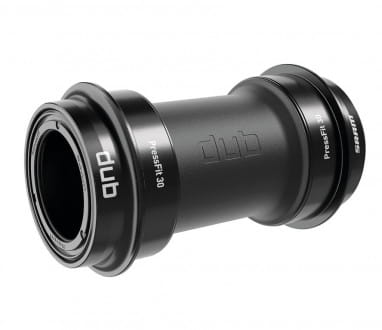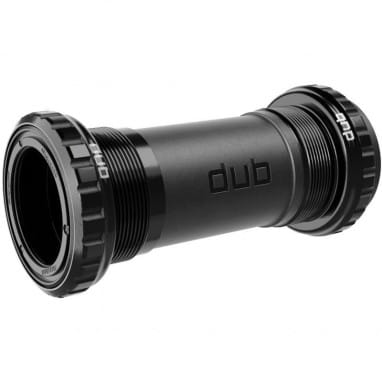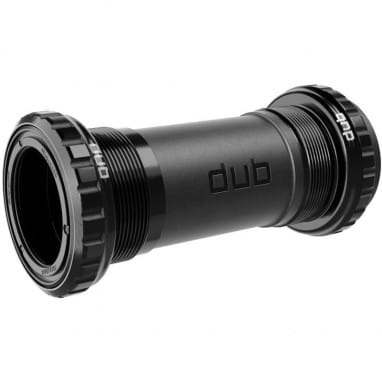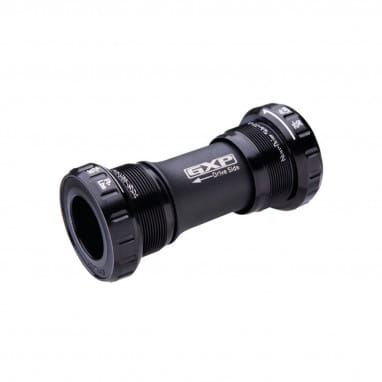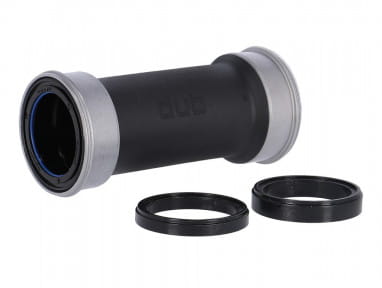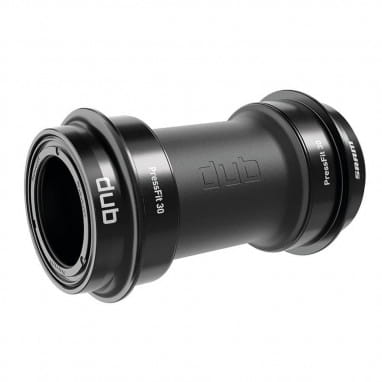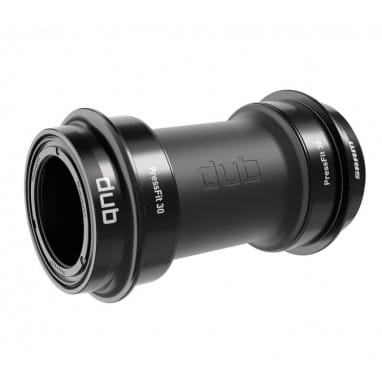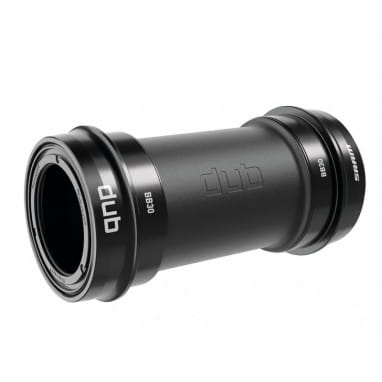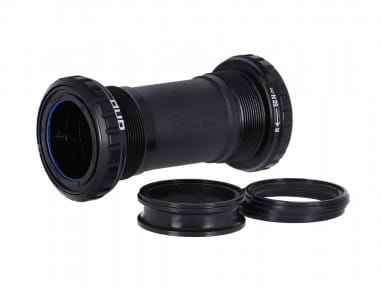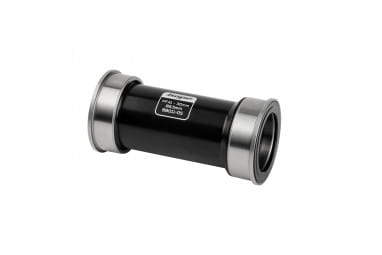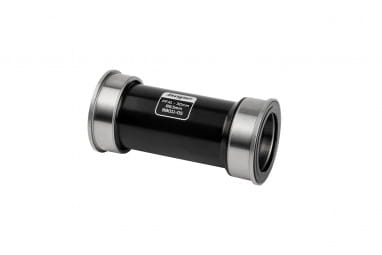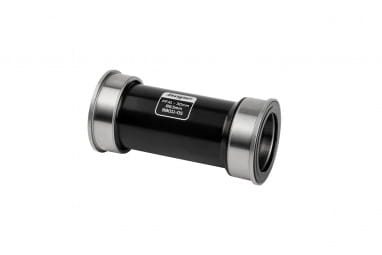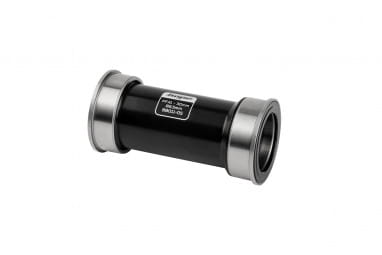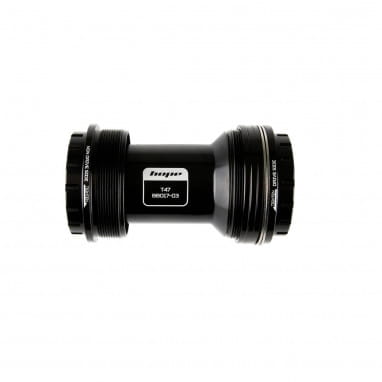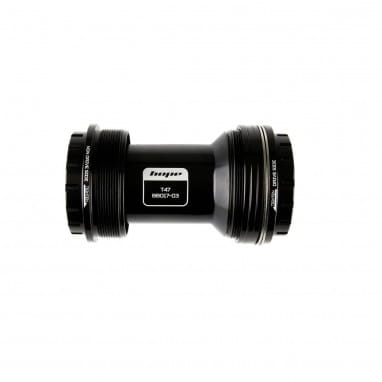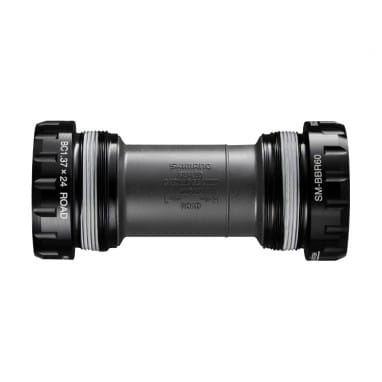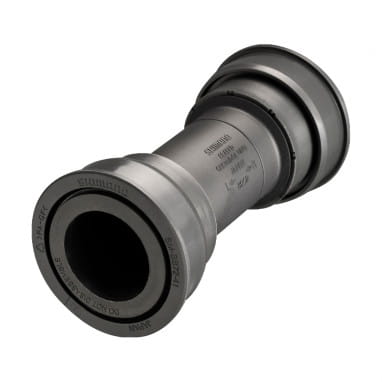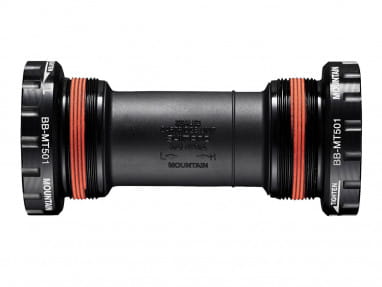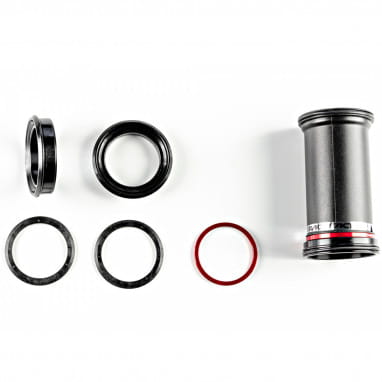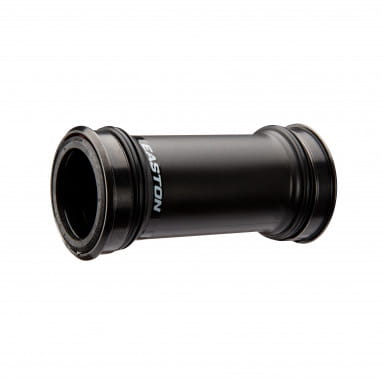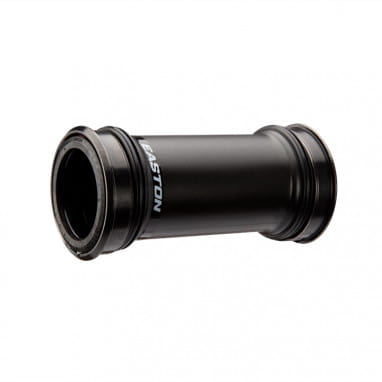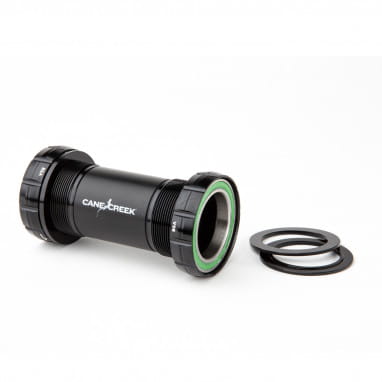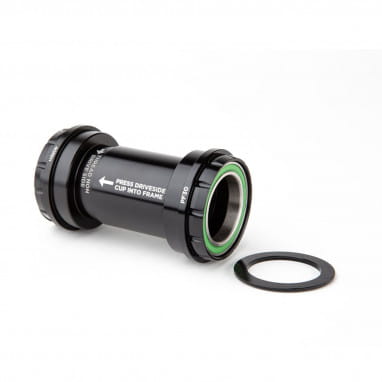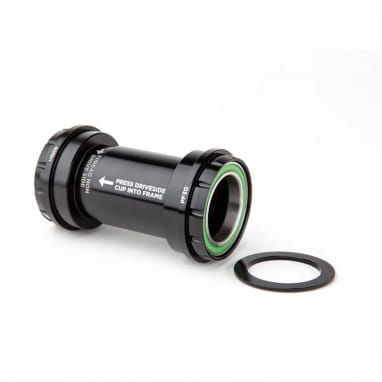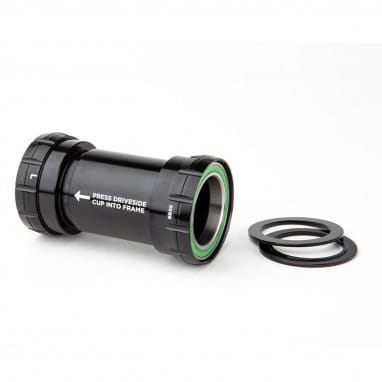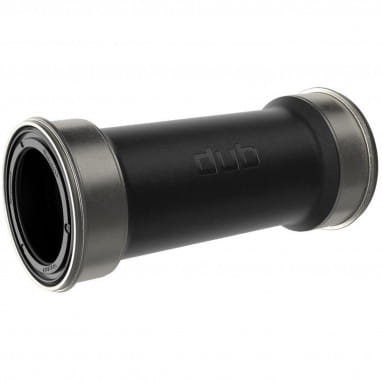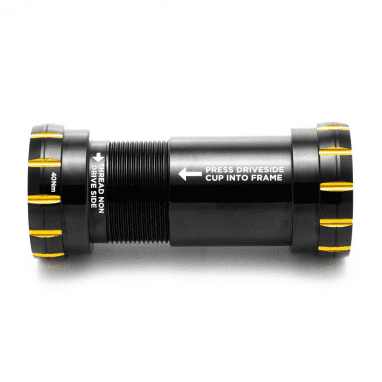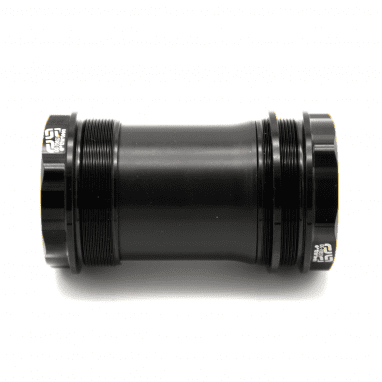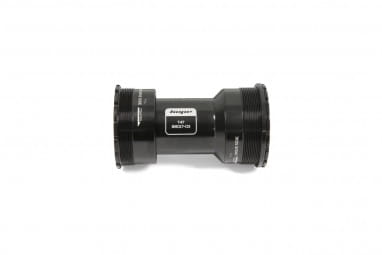There are older bottom bracket systems that have worked well for years, but today high axles are considered standard, most new bikes are equipped with a hollow axle and a two-piece crank. Here you can find replacements for a worn out bottom bracket or finest components for your custom handbuilts.
.
Chain, sprocket or tire - everything that is constantly in motion on the bike is subject to wear. And there the inner bearing or bottom bracket belongs to it.
The bottom bracket belongs to the drive of your bike. An inner bearing for hollow axles consists of two bearing shells left and right, between them is a connecting piece, the housing. Each bike frame has an opening (aka "the bottom bracket shell"), there the inner bearing is screwed or pressed in. The crankshaft (= the connection of the two crank arms) in it remains rotatable, this is ensured by the two bearing shells. So you can move the crank and your bike drives. With other inner bearings, the crankshaft belongs to the bearing, but with hollow axles it is part of the crank. So you have to buy a corresponding crank to a hollow bearing, which brings the axle (or vice versa)
Fun Fact: With a hollow axle bottom bracket, the bearing shells, and thus the actual bearing, are not located inside the bottom bracket shell, but they are clearly visible left and right of it. Strictly speaking, therefore, we are not dealing with inside bearings, rather, the somewhat outdated term "bottom bracket" would be more correct.
What size must have my new bottom bracket?
Since the manufacturers of cranks, bottom brackets and frames did not want to agree on standardized sizes, there are a variety of different bottom brackets. On the one hand, there are different designs, in addition to hollow axles, there are, for example, square inner bearings and many-tooth inner bearings. In addition, there are the bottom brackets in different diameters and lengths. We would like to present you at this point tables that clearly explain where BB30, BB86, DUB or BB90 fit, but unfortunately there are few matches.
To ensure that you buy the right bottom bracket, you read best (if available) the dimensions on the old component. There it says which housing standard and which axle diameter you have to look for. But maybe you can also find them in the specifications of the frame or bike, you can then sort them using our filters.
But you can also measure the opening on the frame and thus determine the diameter and the axle length. The bottom bracket must fit in the axle diameter and in the length (here spacers can help) to the opening in the frame. The crank should then adapt to the bottom bracket and fit its housing standard.
Inner bearing with thread or without thread?
Inner bearings can be purchased with thread or without thread, the decisive factor here is again the design of the frame. If they are mounted without thread, they must be pressed into the bottom bracket shell, if they have a thread, they are screwed. What fits your bike, tells you the frame. Has the bottom bracket shell a thread? Then fits a threaded bottom bracket. The threads differ in the thread pitch and in the direction of rotation of the thread, here there are some standards such as BSA or ITA. Or is there no thread? Then you need a bottom bracket without thread, so a Pressfit bearing (often marked as "PF").
To mount the bottom bracket, you then need the appropriate tool:
- For a press-fit bottom bracket (without thread) you need a press-fit tool
- To install or remove a threaded bottom bracket, you need a bottom bracket wrench or a bottom bracket puller (preferably in combination with a torque wrench). Here - similar to the bearings themselves - each manufacturer has its own ideas, you must have a tool on hand that fits the teeth on the edge of the bearing shells.
Hollow axle bottom bracket for road bikes
.
Maybe you're wondering why you can't filter the bottom brackets here in the store by bike type, i.e. road bike, trekking bike or mountain bike. This is because here, unlike other components, it does not depend so much on the type of bike, rather the dimensions of the bottom bracket shell give the decisive factor. Since there are no uniform dimensions and standards, hollow axle bottom brackets for road bikes are simply narrower and often lighter, while on other bikes larger, more robust versions are installed.
In the question of road bike - MTB, the nature of the axle has another interesting aspect: the width of the bottom bracket shell - and thus the width of the hollow axle - affects the Q-factor. The Q-factor is the distance of the two pedals to each other, and that is of course as narrow as possible on the road bike because of aerodynamics. So narrow bottom bracket shells and thus narrow bottom brackets are in demand here.
Hollow axle bottom bracket for mountain bikes
.
The frames for mountain bikes are wider, so the bottom bracket shell also widens and you consequently have to buy wider bottom brackets. But also the inner diameter is larger here, so the outer diameter of the bottom bracket also grows. Bottom brackets with a little more mass are here but very advantageous, they hold the high loads that arise especially in Enduro and Downhill, simply better. Also with Trailbikes or in the AllMountain area load large forces on the pedals, thus on the crank and thus on the bottom bracket - here a lot of time is spent standing, and thus the entire weight of the driver acts on these components.
Since the hollow axle bottom brackets for mountain bikes are wider, here the bikes also have a larger Q-factor. For more control over the bike, the pedals are then further apart.
Which material is the best for bottom brackets?
As I said, the bottom bracket - like the entire drive system of the bicycle - is a moving wear part that is subjected to large forces. Therefore, in the course of their development, inner bearings have had to master a really difficult balancing act. They must be extremely stable on the one hand, because your pedaling movements constantly work with more or less high loads on it. They must be absolutely (torsionally) stiff, because this is the only way to ensure efficient power transmission. The material must resist abrasion as long as possible. With all these properties, however, the bottom bracket must not become too heavy, so the material must also be as light as possible. Last but not least, the friction is an important parameter, you want to have finally in the drive no part that brakes unnecessarily. Often, therefore, a mix of different materials is used, which keeps the balance between durability, low weight, etc.. Of course, the price also always plays a major role in the new development, because there are different material costs and manufacturing costs.
In the article descriptions you will therefore find combinations of the following materials:
- Plastic
- ceramic
- carbon
- Aluminum
- Stainless steel
- Industrial steel
When do I need a new bottom bracket?
High-quality bikes have a long life, but at some point you need to replace one or another part of the drive. The chain often makes the beginning, the remaining components are then later turn. By the way, the premature wear you can prevent and thus also extend the life of the bottom bracket. The secret is good bicycle care. The more often you plow through rain, mud and wintry conditions on your bike, the faster particles and wetness will gnaw away at the drive parts.
Whether the bottom bracket simply needs care or needs to be replaced, by the way, your ears will tell you - if your bike crunches or cracks with every turn of the crank, you can first clean and re-grease the bottom bracket. If that no longer helps, you need a new one. Here at Bike Mailorder you will find a wide selection of hollow axle bottom brackets from many well-known and proven manufacturers, here you can order the right spare part for your bike. You will find that with a new bottom bracket not only the noise disappears, the bike is also easier to pedal again.
